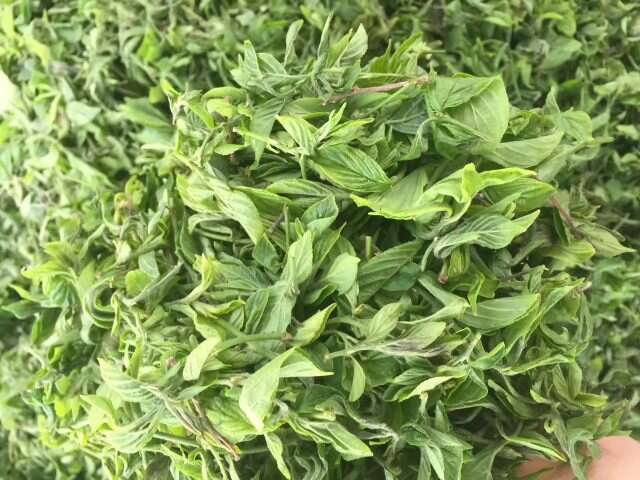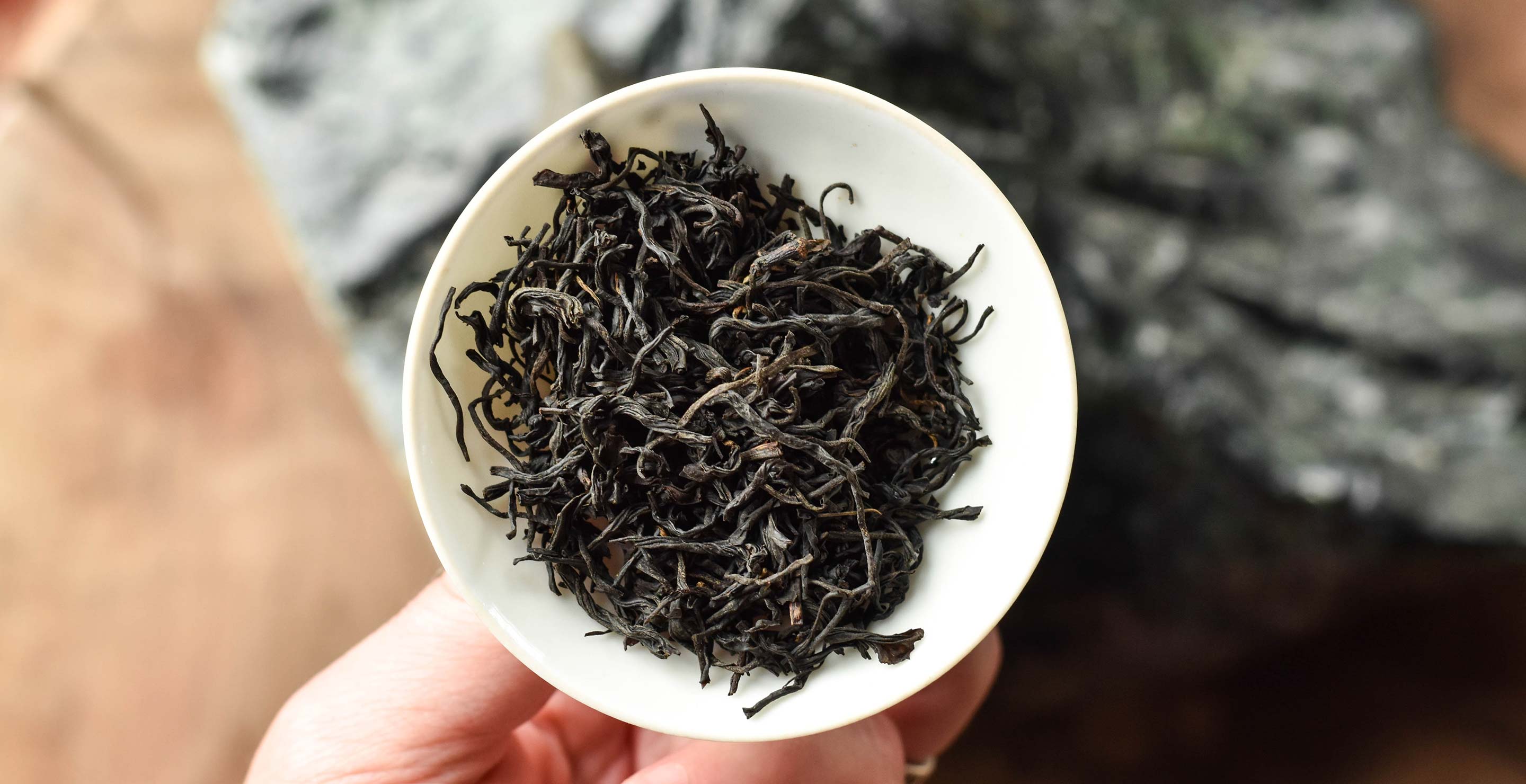May is one of the most exciting months to be in Laoshan.
The double-layered greenhouses protecting the tea plants from harsh winter cold come down, and the plants take in their first direct sunlight of the year. The spring sun encourages the plants to put out the fresh buds that make delicious tea.
Together with their neighbors, the He Family in Laoshan is growing some of the northernmost tea in China. They manage organic fields through the use of crop rotation and cultivating soybeans to draw insects away from tea plants and return nitrates to the soil seasonally. Their tea works hard to survive the cold, but benefits from the shade of daily ocean mist, rocky soil, sweet Laoshan mountain spring water, and masterful technique.
After the bitter cold winter and early spring of 2016, the He Family is excited to share the yield of a temperate spring with great weather and measured rainfall. Most of these new Laoshan Green and Black teas were picked and finished just one day before shipping to the United States (premiering first with our Tea of the Month Club members!).
The He Family is also proud and excited to introduce an entirely new tea in this spring season: Semi-Oxidized Gan Zao Ye! We’re sharing the first batch ever made in the world with everyone alongside the spring harvests of green Gan Zao Ye, Laoshan Pine Needle Green, Laoshan Gongfu Black, Laoshan Green and Roasted Oolong, and classic Laoshan Bilochun.
We couldn’t wait to sit down and taste all of these new teas back-to-back, as soon as they arrived!
We couldn’t help but start with Gan Zao Ye, one of the He Family’s newest experiments in applying tea craft to a non-tea plant: the Laoshan-native Wild Jujube. We have known the He Family for over a decade now, and one of the things we admire about them the most is their willingness to take a risk and go against tradition. Laoshan is still such a new region to tea growing. It needs people like the He Family and their pioneering spirit to develop the craft and form new traditions.
While these leaves are processed just like Laoshan Green, they have a markedly different appearance in a glass pitcher. The most telling difference before turning to taste and smell is the way that the leaves pop open so quickly when they start to brew and reveal their vibrant green color.
The aroma of the wet leaf has quite a fruity aroma, actually reminiscent of jujube fruit. The first steepings are rich and creamy like honeyed oat milk. A satisfying toasty rice flavor grounds the tea and reminded us of a classic genmaicha. As the tea continues, to steep out we pick up subtle vanilla florals accenting the honey and a rich edamame vegetal quality.
One of the most interesting things about drinking Gan Zao Ye was how calm and relaxed we all felt after drinking it. The tea (tisane!) is caffeine free, and according to He Qingqing, great to have before bed for its relaxing qualities. We definitely picked up on this interesting effect.




With Gan Zao Ye as a baseline, we next turned to the newest tea in our collection, and the newest tea coming out of Laoshan: Semi-Oxidized Gan Zao Ye!
This experiment started as a conversation with Mr. He about craft. If a green tea process can be applied to an herb and bring out so much complexity, what about other tea processing techniques? We all wanted to see how a non-tea plant would respond to a traditional piled sun-oxidation process. The results were incredibly interesting! Because the leaves are so much thinner than tea leaves, Gan Zao Ye can only be partially oxidized before it dries completely, yielding a rich deep tea that sits somewhere between green and black tea in processing style.
As they steep, the reddish dry leaves pop open almost as quickly as green Gan Zao Ye, yielding beautiful leaves that get a touch greener with each infusion. The first steepings are very, very malty with a light chocolate flavor, pudding sweetness and hints of violet. As the tea continues steeping, it gets a thick dried apple quality with cherry bark and palm sugar undertones. In late steepings, a woody cedar flavor starts to come through, with long steepings producing a cup full of creamy notes that reminded us of sweet corn pudding. The oxidation process strengthens the malty nutty qualities in green Gan Zao Ye and introduces new deep complexity.
We look forward to continued experiments with this style in next year’s harvest!!



After our wonderful experience with the Gan Zao Ye, we wanted to turn to Mr. He’s favorite “traditional” Laoshan tea: his hand-made Bilochun. The careful small-batch processing is personally finished by Mr. He with the goal of giving the biggest textural experience to Laoshan tea as possible.
This year, we were thrilled with the dessert-like creaminess in the He Family’s Bilochun. It felt like sipping on a creamy melon smoothie. We usually don’t taste this much fruit in a Laoshan greentea, and we loved the results. As we continued steeping out the tea, we started getting more of the traditional roasted barley and soybean flavor that we know and love in Laoshan tea. In very late steepings, an intriguing wintergreen cooling sensation started to develop.



Laoshan Pine Needle Green is one of He Qingqing’s favorite teas for the beautiful way it dances in a glass pitcher while it brews and for its refined delicate aroma. This year’s harvest really lived up to its reputation when we tasted it together. The initial aroma was a lovely balance of foresty pine and savory chestnut.
The initial steepings in this year’s harvest are crisp and green with a spicy undertone (like arugula). This taste slowly melts into a thicker, smoother texture, like thick clover honey. We were very excited in late steepings to taste a sweet pistachio flavor with a creamy but cooling lemon sorbet aftertaste. Both of these new tasting notes to Laoshan Green for us. It is so exciting to see the way these teas change with each year’s weather and subtle refinements in craft!



After sipping on such a refined expression of how hand-crafting brings out the most in a tea, we wanted to taste Laoshan Gongfu Black. This is a hand-finished black tea that is twisted and dried just like Wuyi Gongfu Black and Laoshan Pine Needle Green. We wanted to see how the textural boost you see in the Laoshan Bilochun carries through to a black tea process.
The initial aromas are full of rich, tangy goji berry, raisin, and savory roasted chestnut. For us, the initial sips had the thick pastry like quality of croissant with the deep chocolate flavor that Laoshan Black is becoming famous for. The thick mouthfeel of the Bilochun carries through perfectly in Laoshan Gongfu Black. As we continued steeping out the tea, we got dark fruit and hearty bran flavor with a big, thick honey aftertaste and texture. In the latest steepings we tasted toasted marshmallow and graham. Yum!




We were super excited to drink both Laoshan Oolongs this year! We have all seen subtle changes every year since the tea was introduced, giving them a more and more unique identity separate from Laoshan Green and Black. This year seems to be a watershed year in really defining what the oolong process brings to Laoshan tea. Both the green and the roasted oolongs shine with a new presence, all their own.
While past year’s have seen Laoshan Green Oolong sharing much with Laoshan Green and adding in complexity and depth, this year we were excited to taste a deep mineral quality, a true and pure expression of Laoshan water and stone, above and beyond other harvests else we have tasted. The aroma accented the mineral qualities with a complex tangerin peel, deep green matcha, and savory buttery shortbread quality. As the tea continues steeping out, a light toasted rice genmaicha-like flavor began to emerge.
All together, this is the most complex and most commanding Laoshan Green Oolong we have seen so far!




After such a wonderful experience with the Laoshan Green Oolong, we turned at last to the Laoshan Roasted Oolong.
Happily, we were thrilled with the same huge mineral notes that we loved in the greener style. The mineral qualities of this tea make it now stylistically closer to Wuyi tea for the way processing brings out the flavor of rock and water.
A dried apple flavor dominated in later steepings, with a subtle violet floral and the chocolate undertones that oxidation brings to Laoshan tea. A woody fruity cherry bark flavor accented the apple as a cooling cedar note lingered in the latest steepings. We pushed this tea with long steepings, only to find delicious and smooth marshmallow and cocoa.
We are so excited to see such complexity in this year’s Laoshan Oolong teas. This year’s weather and refined technique have come together to push this tea in a new direction!





 How To
How To Myths & Legends
Myths & Legends Travelogue
Travelogue Tasting Journal
Tasting Journal Talking Shop
Talking Shop Tea 101
Tea 101 Watch
Watch Teaware
Teaware News
News








Leave a Reply